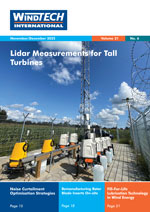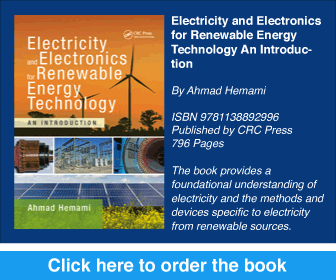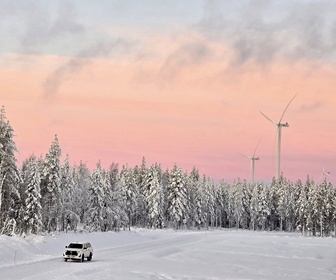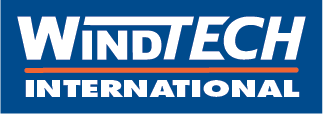- Category: Articles
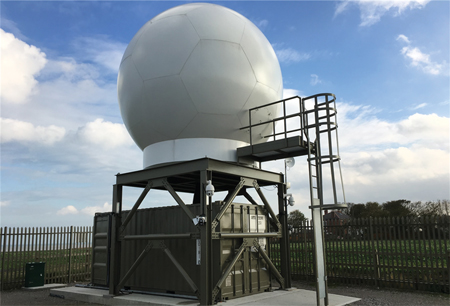 Using Doppler Radar to Document Wind-Energy-Relevant Flow Fields
Using Doppler Radar to Document Wind-Energy-Relevant Flow FieldsSpecialised Doppler radar has continued its emergence as a powerful, complementary technology to provide remotely sensed maps of the wind to serve a broad range of wind energy interests. Rapid scan speeds, excellent along-beam resolution and a large maximum range allow for the simultaneous capture of wind flow fields at disparate scales of motion. Hence, the measurement tool contributes information concurrently to a wide range of issues facing the industry while also collecting weather insights to bolster operational decision-making. The combined deployment of two or more radar systems allows for the construction of synthesised wind fields where the full horizontal wind vector can be resolved over a three-dimensional domain horizontally covering an entire wind farm and vertically extending through the depth of the rotor sweep. As the cost of the early-stage technology continues to decrease in the face of growing wind turbine and wind farm deployment size and complexity, Doppler radar sits uniquely positioned to expand its contribution to the industry in the coming years.
Brian Hirth and John Schroeder, SmartWind Technologies, Lubbock, Texas, USA
- Category: Articles
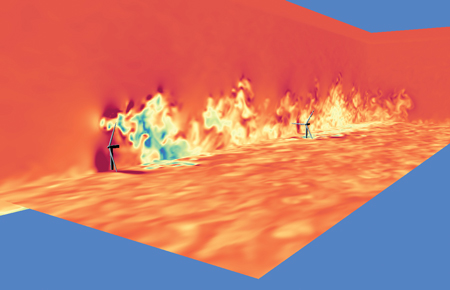 Atmospheric Modelling Using Large-Eddy Simulation
Atmospheric Modelling Using Large-Eddy SimulationThanks to the enormous engineering successes of recent decades, wind energy is now expected to be the central pillar of the energy transition. To continue the success story, however, several grand challenges still need to be met. On the one hand, the challenges are all related to increasing scale: of wind turbines themselves, of clusters of wind farms and of the share of wind energy in the electricity system. On the other hand, the challenges stem from our limited understanding of the atmosphere: of blade aerodynamics, wake effects, interactions between the wind farm and the atmosphere, and running an entire energy system based on the weather.
By Remco Verzijlbergh, Co-founder, Whiffle, the Netherlands
- Category: Articles
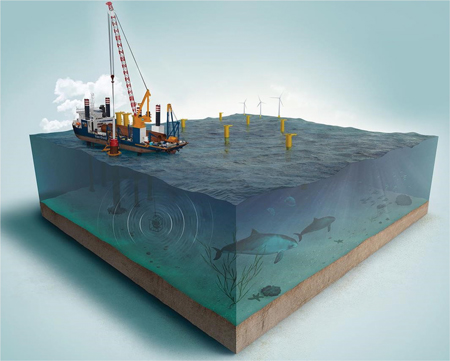 Marine Life Protection
Marine Life ProtectionAcoustic mitigation devices are one of industry-standard solutions for preventing adverse effects of marine infrastructural development works, such as physical interaction with construction equipment or exposure to high levels of underwater sound, they are able to temporarily remove wildlife from a project site and potentially harmful activities. However, not all acoustic mitigation devices are the same, FaunaGuard is a set of species-specific devices which are available for marine contractors and other interested parties to hire. These innovative, welfare-first modular devices create a marine mammal exclusion zone by targeting their respective hearing ranges and repelling them with specialised underwater sound patterns.
By Andrew Gillespie, Marine Protection Products Manager, Ace Aquatec, UK
- Category: Articles
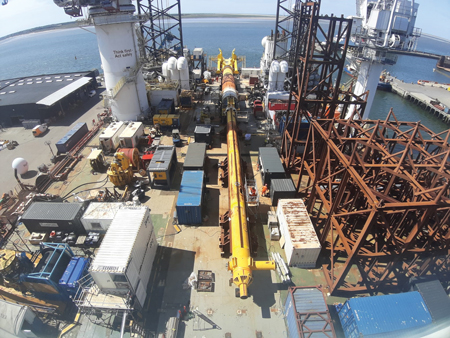 How the Wind Industry Can Accelerate Construction and Deployment
How the Wind Industry Can Accelerate Construction and DeploymentAs demand for carbon-neutral energy production increases around the world, wind generation has gone from strength to strength. Global power output by these means grew by a record 273 TWh in 2021, according to an IEA report (1) – 55 % higher growth than was achieved in 2020. Much of this capacity was driven by new onshore capacity, which is now present in 115 countries around the world. But offshore, the picture is very different. Just 19 countries currently have these kinds of deployments showing the progress we still need to make.
By Peter Richards, Chief Engineer, Fugro, UK
- Category: Articles
 Reducing Installation Costs by Leaving Blades Unattended?
Reducing Installation Costs by Leaving Blades Unattended?iWind Renewables has provided technical consulting services addressing the assessment of aeroelastic instabilities on incomplete wind turbines (with one or two blades assembled) during installation or maintenance. A wide list of wind turbine configurations of rated power spanning from 2 to 6+MW was analysed, with short or tall, steel or concrete towers. Both mechanisms that potentially trigger aeroelastic instabilities were examined, i.e. stall- and vortex-induced vibrations, at all relevant rotor and tower modes. It was concluded that single- and two-bladed setups may be left unattended for a reasonable time (in the order of weeks) if properly designed and analysed, allowing for a reduction in installation costs. The methodology applied, demonstrative results and key parameters that affect stability are presented and discussed in this article.
By Dimitris Manolas and Panagiotis Chaviaropoulos, iWind Renewables, Greece
- Category: Articles
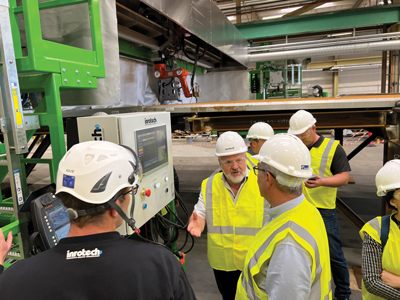 Bringing the Robot to the Job
Bringing the Robot to the JobInrotech, based in Odense in Denmark, is a provider of robotic welding solutions that break with traditional methods of manufacturing. Inrotech has a history of providing welding automation since the mid-1990s, developing its first product for the shipbuilding industry. Nowadays, it provides automated welding solutions for other heavy industries and the offshore wind industry, where the correct technology is essential for the welding of large and complex structures.
By Philip Toft Halskov, Marketing Manager, Inrotech, Denmark
- Category: Articles
Offering Benefits Compared with Conventional HVDC Copper Cables in Offshore Grids
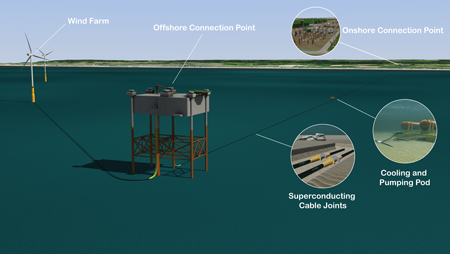 Subsea superconducting transmission cables, a new innovative cable technology, were shown to offer greater economic benefits to the energy system than conventional high-voltage, direct current (HVDC) copper technology in a 2050 offshore grid. The University of Strathclyde, Glasgow, Offshore Renewable Energy Catapult, UK, and SuperNode, Ireland, have conducted technical and techno-economic studies analysing the potential benefits of high-temperature superconductor subsea transmission cables compared with conventional copper 525kV HVDC cable technology.
Subsea superconducting transmission cables, a new innovative cable technology, were shown to offer greater economic benefits to the energy system than conventional high-voltage, direct current (HVDC) copper technology in a 2050 offshore grid. The University of Strathclyde, Glasgow, Offshore Renewable Energy Catapult, UK, and SuperNode, Ireland, have conducted technical and techno-economic studies analysing the potential benefits of high-temperature superconductor subsea transmission cables compared with conventional copper 525kV HVDC cable technology.By Maria O’Neill, Technology Analyst, SuperNode, Ireland
Use of cookies
Windtech International wants to make your visit to our website as pleasant as possible. That is why we place cookies on your computer that remember your preferences. With anonymous information about your site use you also help us to improve the website. Of course we will ask for your permission first. Click Accept to use all functions of the Windtech International website.



